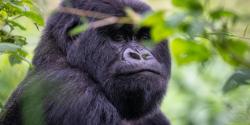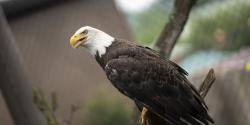Although the African leopard is not the largest of the big cats, it is the strongest pound for pound.
These excellent climbers spend most of their time in the shade and safety of trees. They can carry prey twice their own body weight into trees to protect their meals from other predators.
Scientific Name: Panther pardus
Conservation Status: Vulnerable
Size: Body length is 3 to 6 ft., with an additional 2 to 4 ft. of tail. Height at the shoulder is 18 to 31 in.
Weight: Males range from 90 to 200 lbs. Females weigh between 60 to 130 lbs.
Median Life Expectancy: Unknown












